So, it was ‘Tchau’ to Portugal for the 2nd time and ‘Hola Espana’ for the 3rd time this trip as we left Portugal and arrived back in Spain. Just across the Minho river which separates the two countries is the town of Tui and a tiny aire with just 3 small motorhome slots. We managed to fit quite snugly into a space just before another van arrived and parked in front so it was perfect timing. We knew the weather forecast for the next day wasn’t good so we went straight out, up the hill and into the old part of town to take a look around while it was still dry.
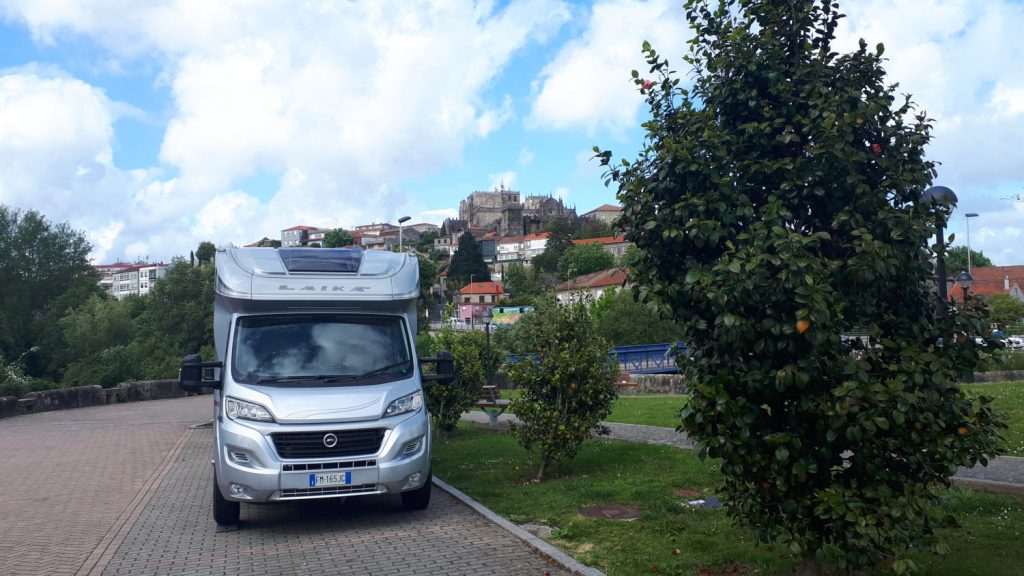
Buzz in the motorhome parking place at Tui, just before another van squeezed in front!
From our parking place it looked like a small town with just a big old church perched on the hill but as we got through the town walls and delved further in, it opened out into wider streets with some handsome homes, attractive buildings and paved plazas. Not what we were expecting. Time passed by and it was getting a bit late but we weren’t quite ready to go back to sit inside so when a little bar with convivial chatter emanating from it appeared, we decided to duck in and get a drink. It’s easy to feel a bit self-conscious when you first walk in to a bar and all the locals turn round to look, but once you’ve got a drink and found yourself a seat you become just another part of the furniture like everyone else and there no better place to be. It was a nice surprise when the drinks arrived along with a little plate of complimentary bread and cheese, followed by chunks of chorizo with the next one.
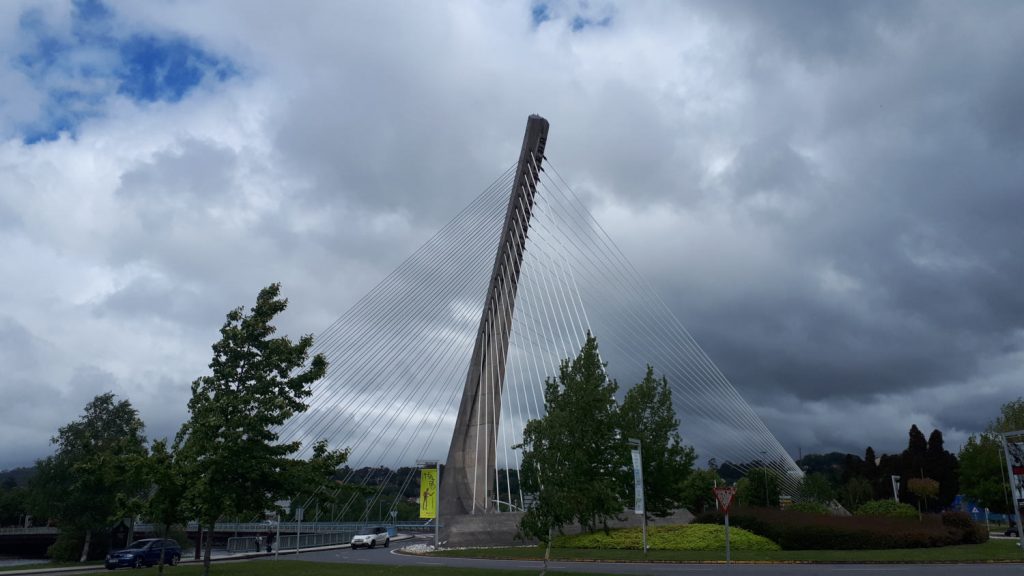
The ‘whistling’ bridge at Pontevedra
Morning came and with it rain and grey skies. There was no point in going out just to get drenched and fortunately our laptops were fully charged so we put on the radio, made a coffee and got on with some blogging and photo editing. Checking the forecast for the next couple of days left us a bit unsure about what to do next. At least a couple of wet, miserable days were due and as we are in our final weeks we really need to keep heading North now. Not wanting to just sit around all day though we drove onwards about 50km to the Rias Baixas area and Pontevedra hoping for a weather miracle!
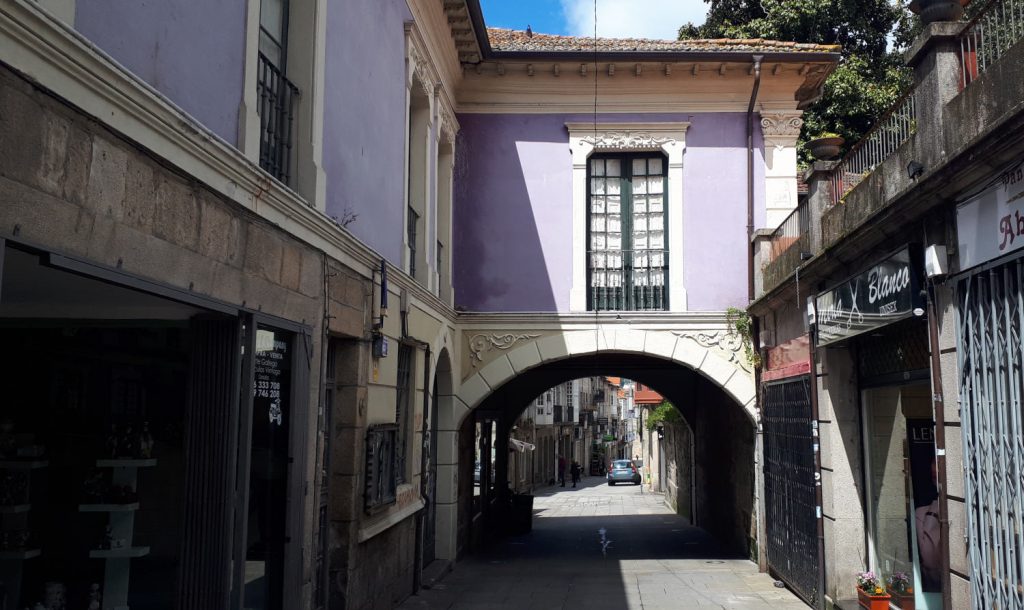
Some of Pontevedra’s attractive architecture
It was still pouring when we arrived, parking at the aire under an unusual looking road bridge for what would turn out to be one of our noisiest nights for a long time. Not only was it windy and rainy, as soon as we got into bed we were suddenly aware of the strangest noise which we couldn’t make out. Eventually we realised it was the sound of wind whistling through the bridge cables and couldn’t quite believe how loud and relentless it was. Earplugs helped but didn’t stop the van rocking all night so sleep didn’t come easily. Then at about 7 o’clock in the morning to finish things off really nicely, the men on the construction site opposite got to work with their diggers and cranes!
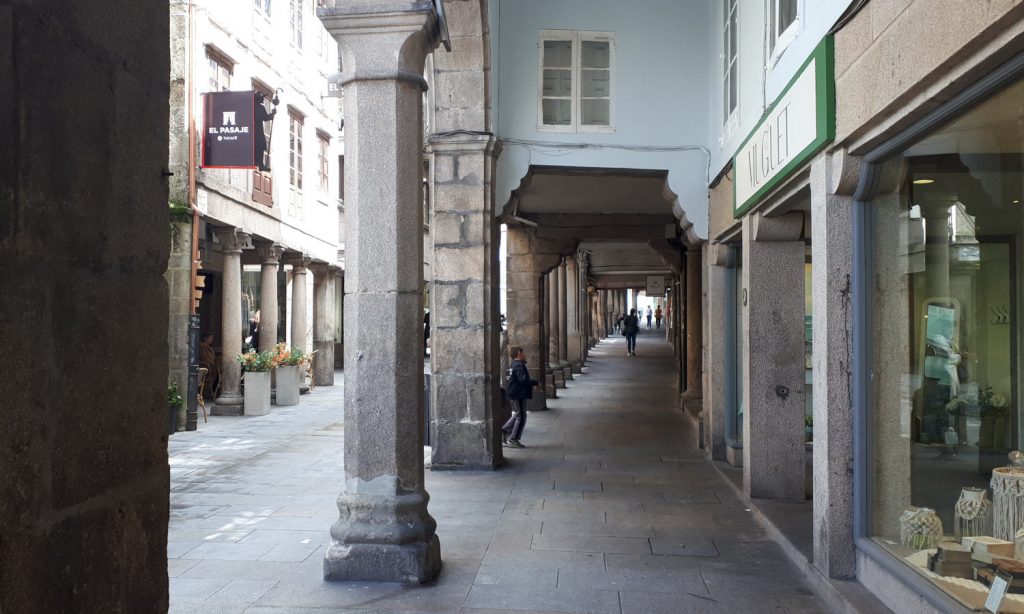
Pontevedra – porticoed streets of the old town
Not exactly feeling refreshed and with faces about as grey as the weather we were at least pleased to see that it was dry. In fact as the morning progressed we could see the occasion glimpse of blue sky between the clouds. Setting off for a look around we cheered up a bit finding quite an attractive old town with 18th century porticoed streets, stone paved plazas, palaces and churches. The town has Roman origins and is the capital of the Galician province so probably deserved a longer visit but as it was it we only stayed for a couple of hours.
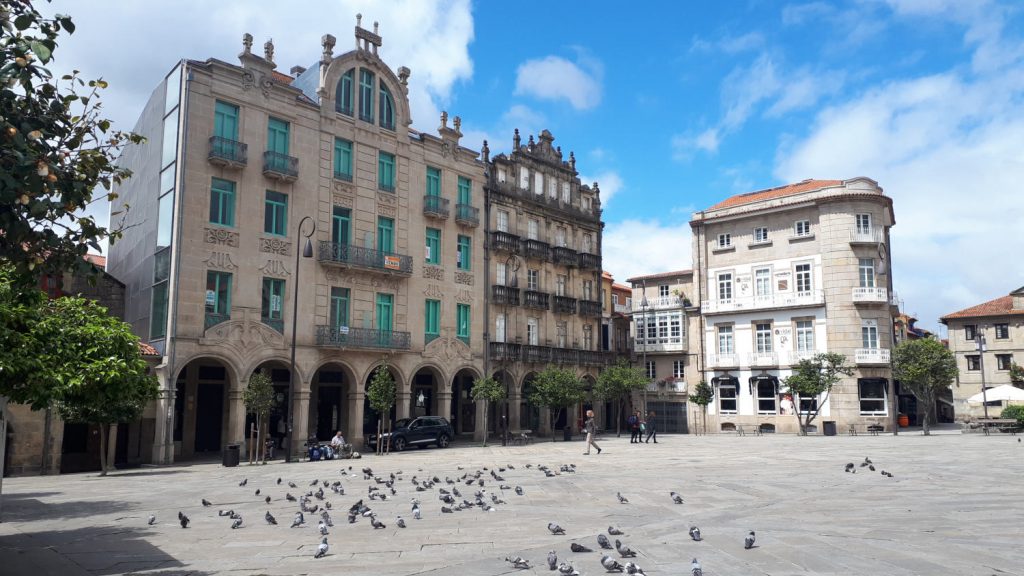
Plenty of pigeons in Pontevedra!
Knowing we’re close to the end of our trip we’ve moving quite quickly through 2 or 3 places a day at the moment and after some lunch we set off again. This time it was just a short 15km trip around the shore to the small fishing village of Combarro, parking by the marina. A small town with a big touristic pull, it is well-known for its ‘horreos’ or grain stores and we were lucky to get there just as a couple of coachloads of people were leaving. These unusual structures, unique I think to the Galician area were originally used to store and dry corn, fish and sometimes meat and potatoes. They were first built in the 18th century with simple plaited canes with thatched roofs but later with wood and stone. Always on stilts, they are designed to keep the food preserved, away from damp and vermins. They certainly made for a scenic little setting and we loved the typical Galician fisherman’s houses (apparently always facing the sea), cobbled old streets and differently painted doors and windows. The groundfloors were used to store fishing tackle and tools and the living area and kitchen was above with a ramp to the sea outside where the boats were hauled up and the nets stored. It’s only a tiny town so an hour is all you really need here unless you want to sit and have a drink or something to eat, which you can easily do in a selection of bars and restaurants.
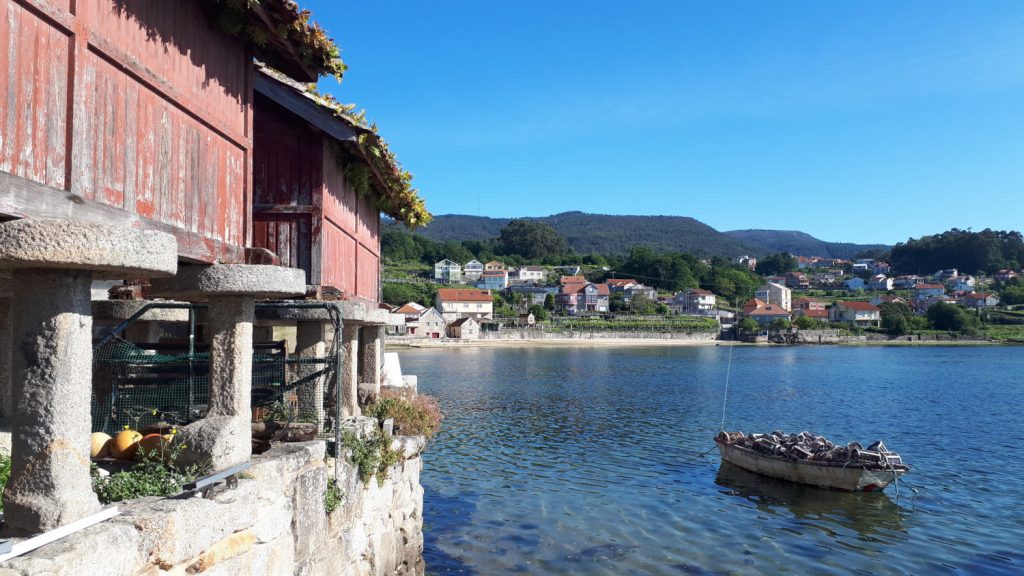
Horreos, grain stores, on the waterfront at Combarro
The skies had turned moody again and we hadn’t decided where to go next so we went back a couple of km to Poio as we’d seen a sign for motorhome parking there. We ended up staying the night there with a nice outlook despite the gloom and in the morning we were so happy to see clear blue sky. It was so much brighter and nicer that we popped back to Combarro to take some better photos! Overnight we’d made up our minds to go to Cambados next, just another 25 km around the shoreline. We parked just outside of town because it seemed to be very busy, finding a large parking area near the boat works.
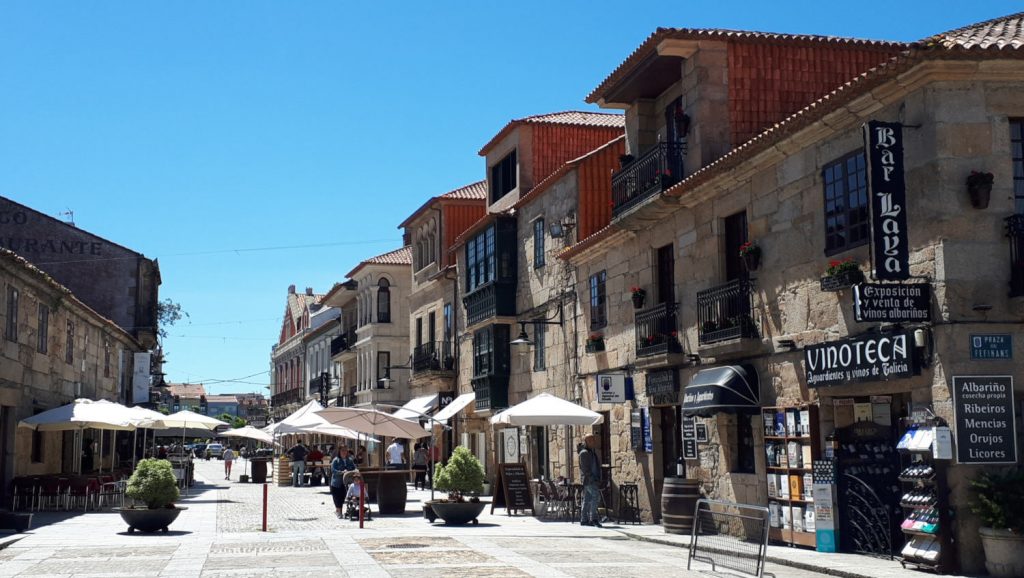
Cambados wide pedestrianised street with really attractive brick buildings
We walked into town along the shoreline leading on to a pleasant palm lined promenade full of busy market stalls selling clothing. Julian had his eye on another stretchy belt like the one he bought for 2 euros earlier in the year but at the steep sum of 5 euros they were at least 3 euros too much! Not long after that we got to the old part of town where we came across a band performing in the street, dressed in brightly coloured traditional Galician clothing playing tamborines, drums and the Galician bagpipes. The sound was completely different to the Scottish bagpipes we are used to and quite jolly and joyful.
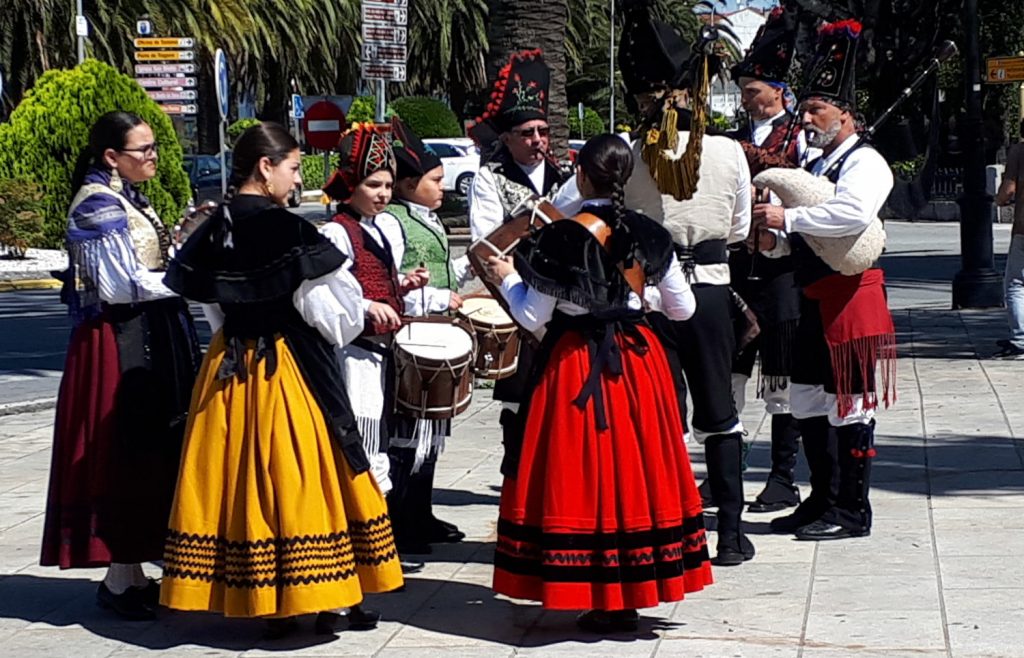
Traditional Galician band playing drums, tamborine and bagpipes
Cambados was a really attractive town, with a wide main street full of character, lined with small shops selling traditional Galician products with a prominence of mountain cheeses and Tarta de Santiago. As it was almost Monday and we do like to indulge in our little tradition of Monday Bunday (just an excuse to eat cake really!) we thought we’d give the tart a go. It’s a particular Galician almond tart with protected status (PGI) which means it can only made here in the province and has to contain a minimum of 33% almonds to be called an authentic Tarta de Santiago. It usually has a pastry case and the filling is a dense, moist almond with vanilla and zest of lemon. We ate it back in the motorhome later on and it was utterly delicious.
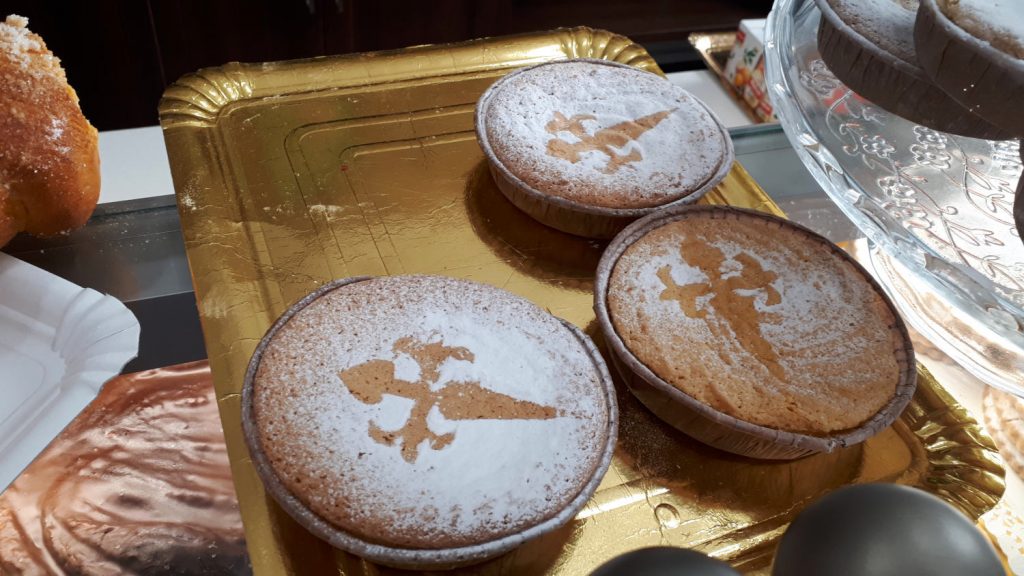
Tarta de Santiago – buttery, almond deliciousness!
Just on the edge of town we followed signs to the Ruinas de Santa Maria and found an old church ruin where only the arches of the roof remain which was quite unusual. It is now a cemetery which seemed to be full to the brim!
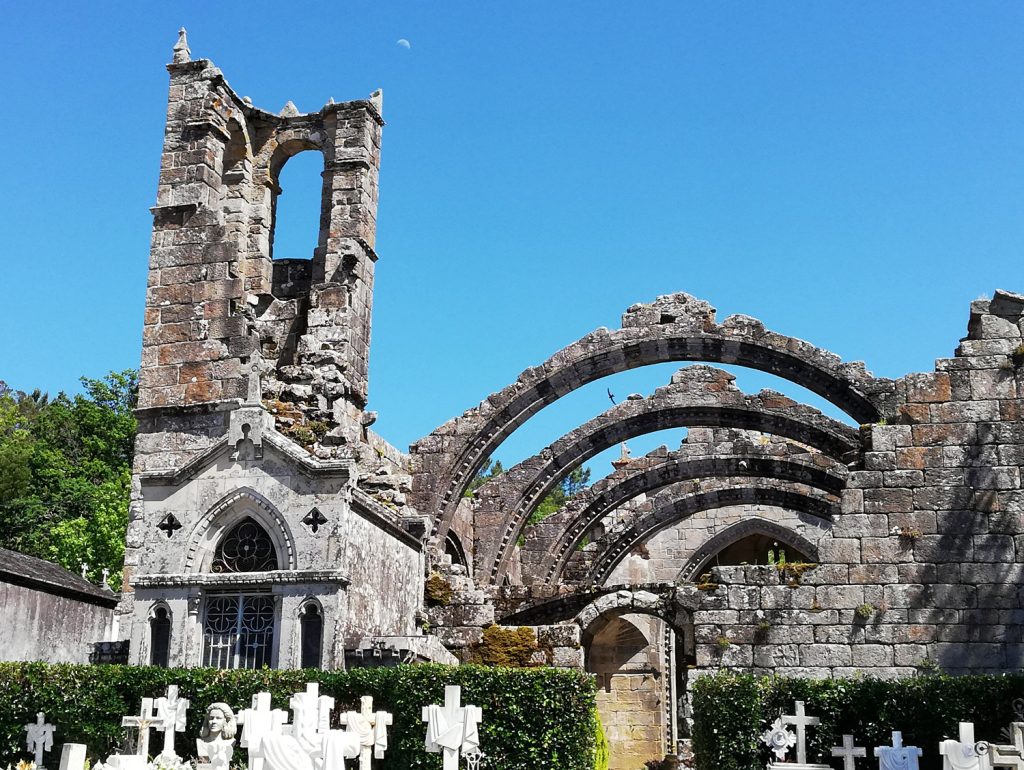
The Ruinas de Santa Maria, with 4 remaining transversal arches, first documented in 1421
Apart from cheese and tarts, Cambados is renowned for its locally produced Albariño wine, a full-bodied white. I treated myself to a glass instead of the usual house white and it was really tasty. We’ve loved trying different wines while away and will have more confidence now when ordering wine in a restaurant at home having a bit more knowledge about them. We might even buy something other than Sauvignon Blanc next time we go to Sainsbury’s!
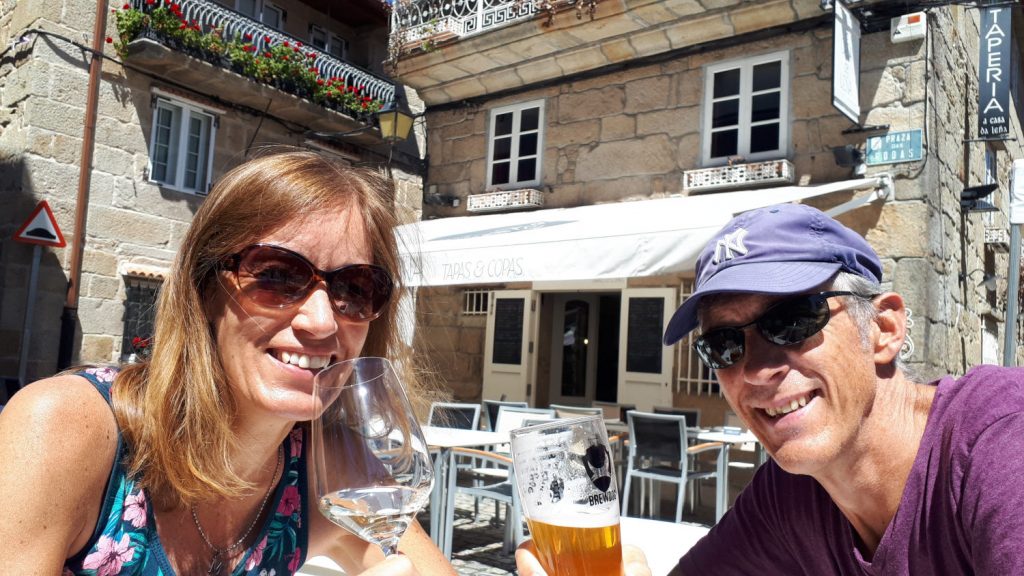
Enjoying a glass of Albarino and an IPA at a Combarro cafe
After a lovely relaxed day we continued with the theme and made our way further up the Rias Baixas to Ilha de Arousa, driving over the road across the sea which connects it to the mainland. We really just came here for the motorhome parking right by the beach and to sit in the sun being lazy for a while. There was plenty of parking space and the beach as just a few steps away so we took our chairs down, a couple of cold drinks and a bag of snacks and books and made ourselves comfortable. The sea was cool and clear, gently lapping against the shore and the sun beamed down on us, until eventually it went down and we went inside.
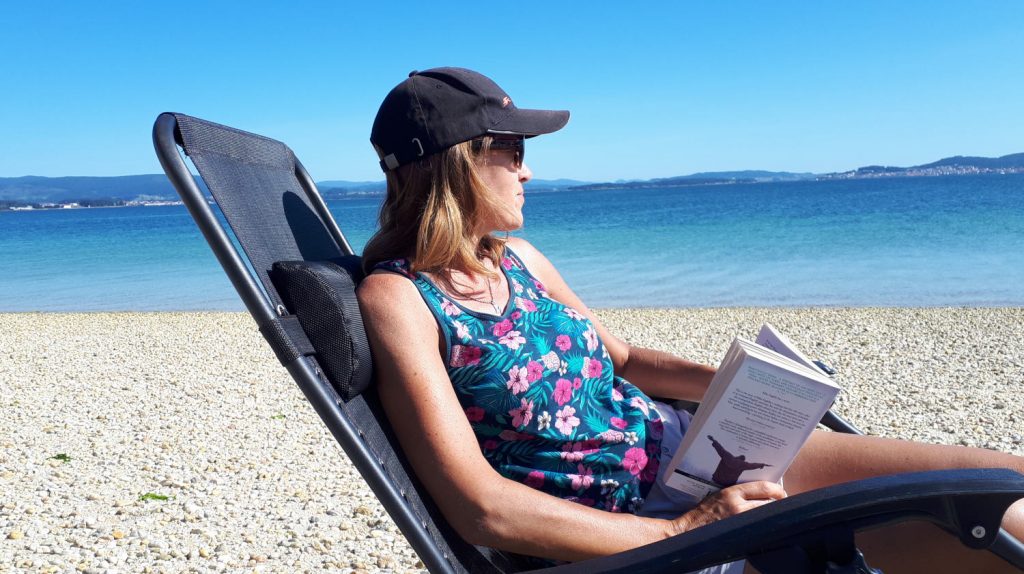
Blue sea, blue sky on the Ilha de Arousa – perfect!
We were parked next to a Spanish couple, one from Galicia, the area to the North where we were going next. She recommended that we should go to the city of A Coruña so that’s what we decided to do the next day. After all, what better advice can there be than that of a local?


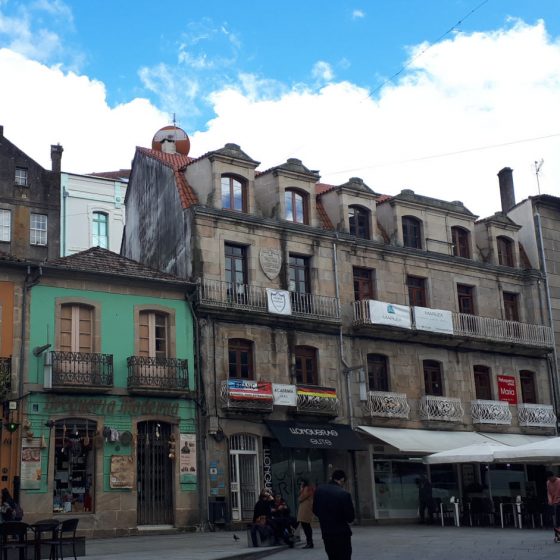
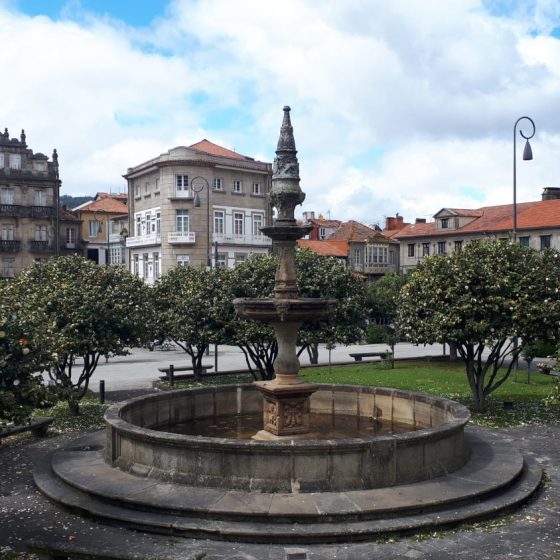
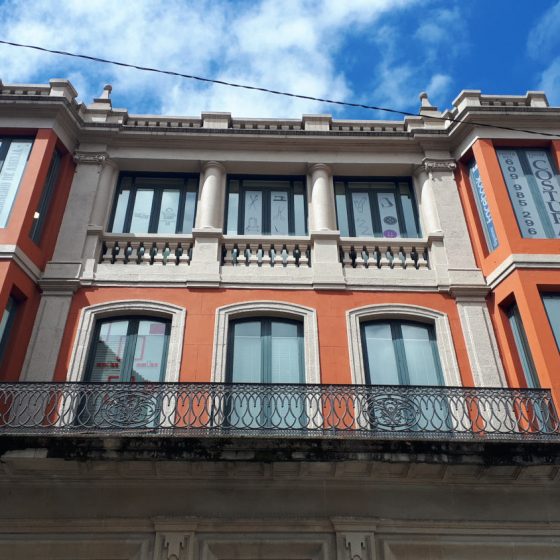
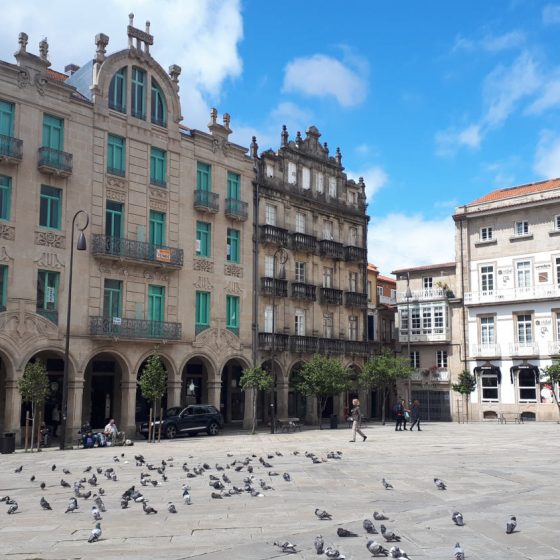
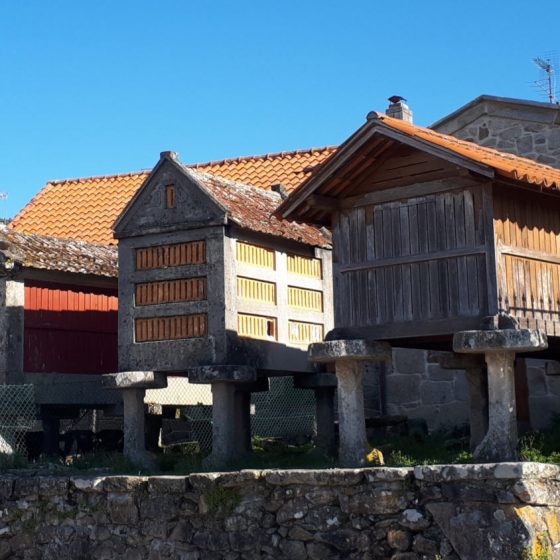
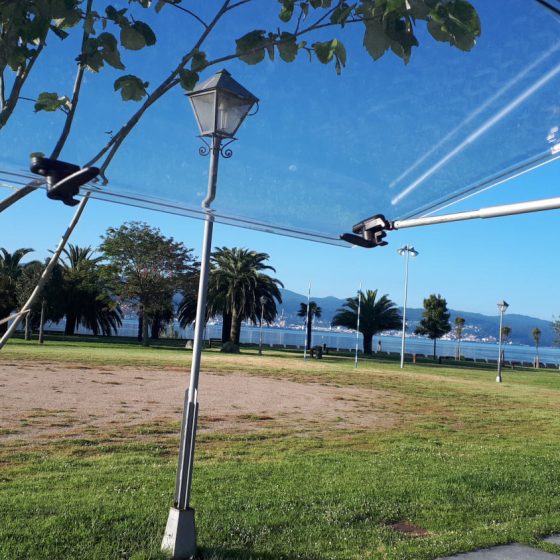
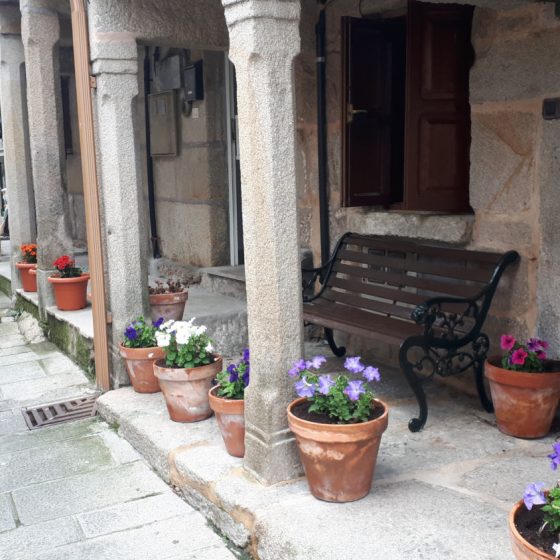
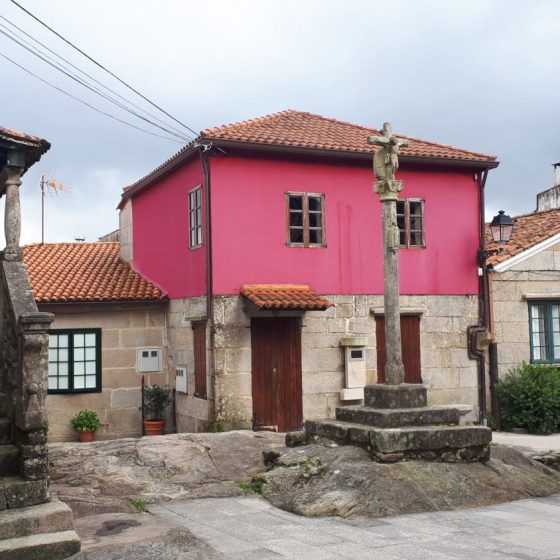
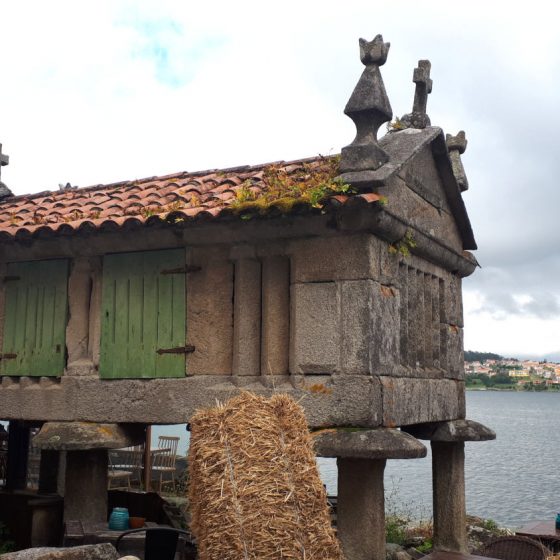
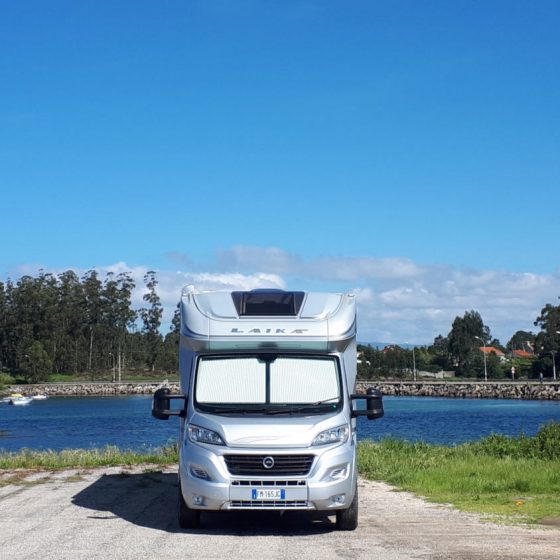
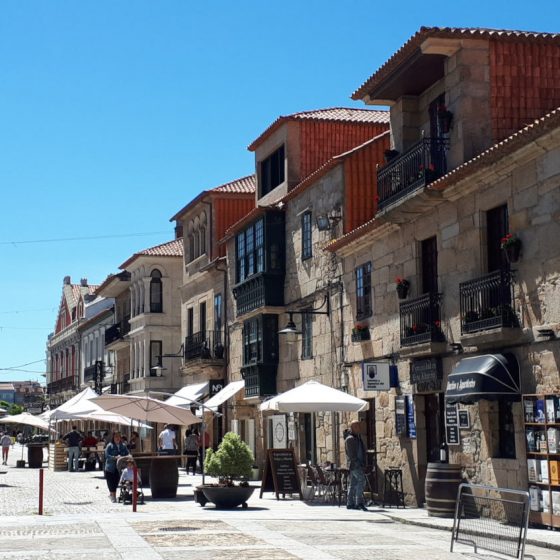
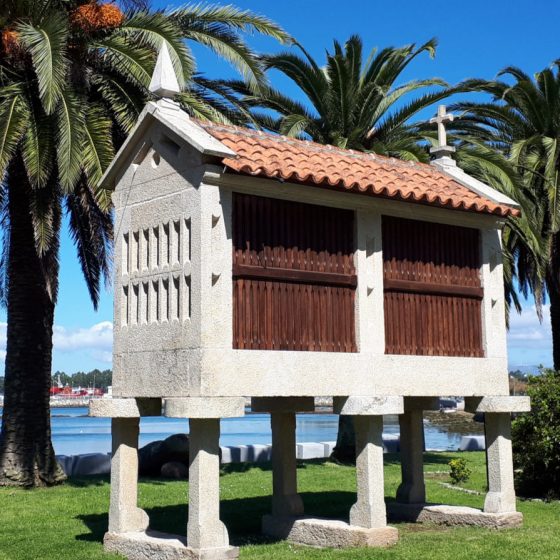
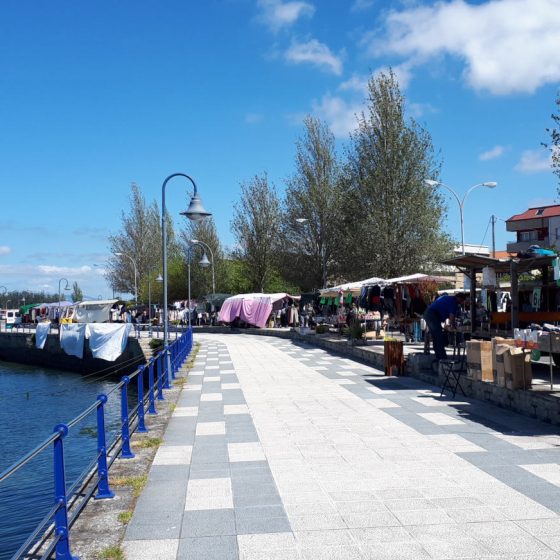
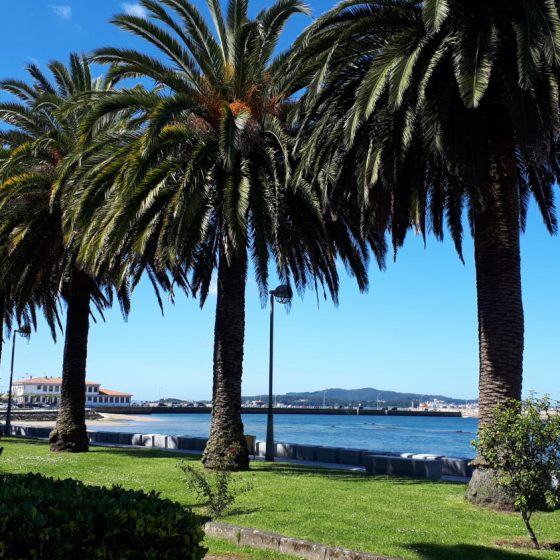
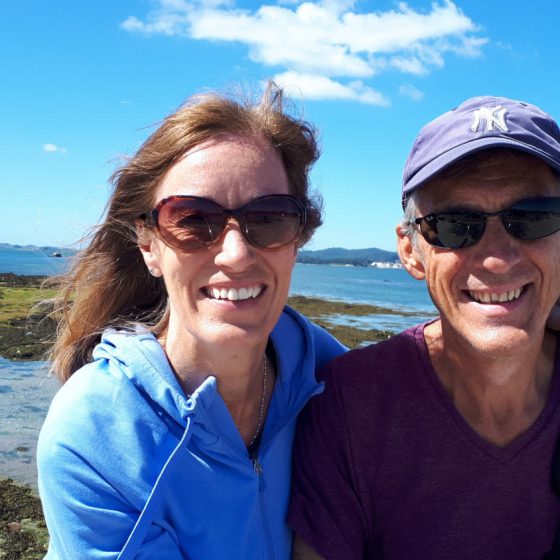
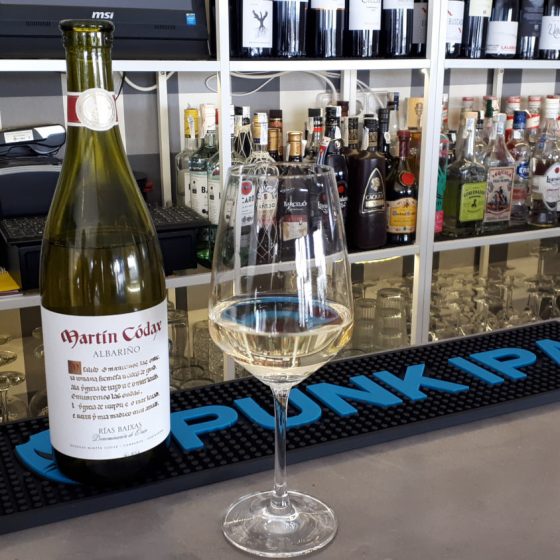
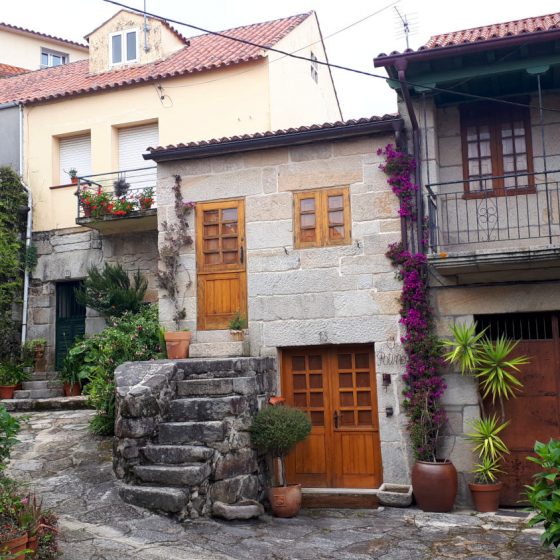
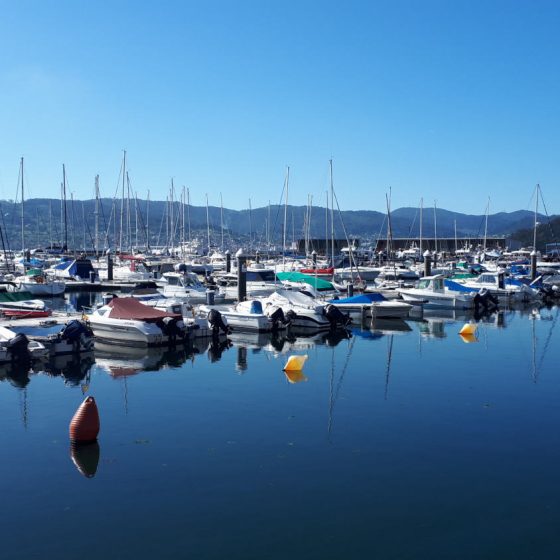
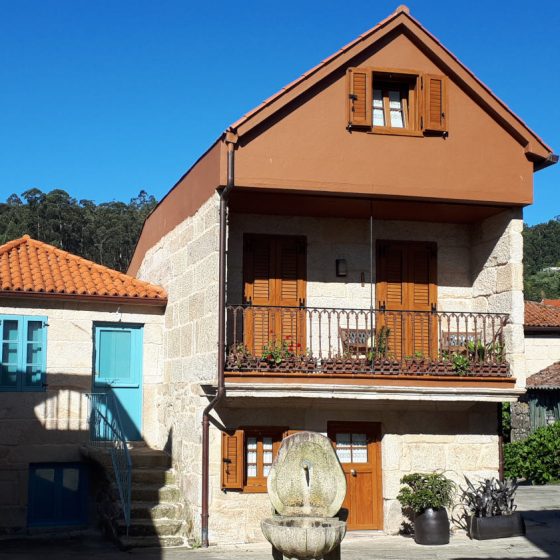
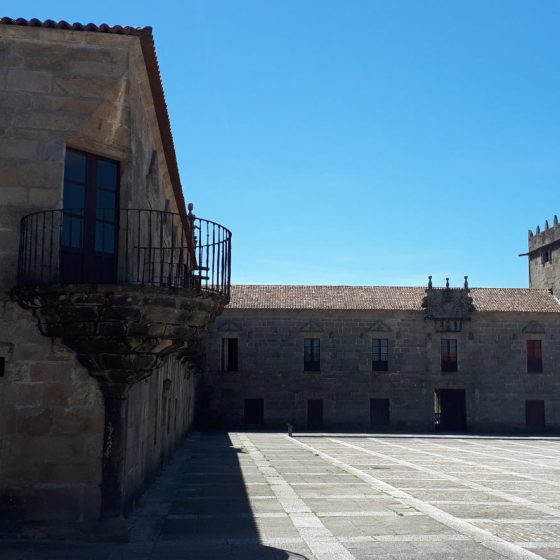
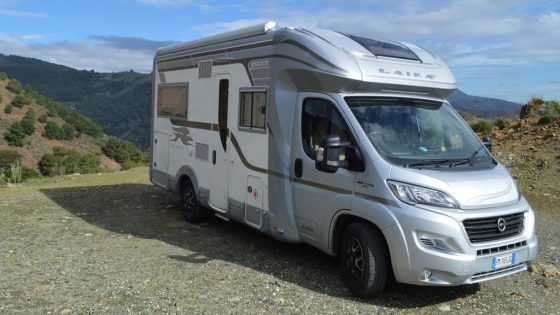
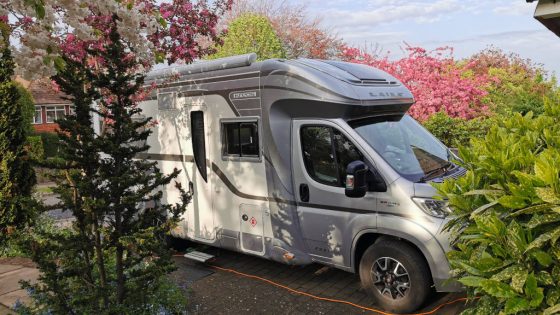
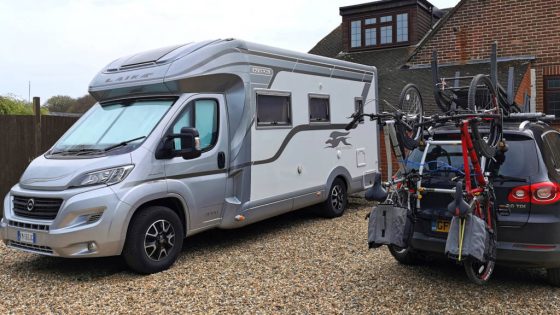
Leave a Reply